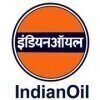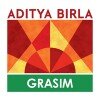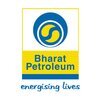Filter interviews by
Qatar Chemical Company HSE Officer Interview Questions, Process, and Tips
Qatar Chemical Company HSE Officer Interview Experiences
1 interview found
I applied via Recruitment Consultant and was interviewed in Oct 2019. There was 1 interview round.
Interview Questionnaire
22 Questions
- Q1. 1) tell me about your self,
- Q2. 2) As a safety officer your Responsibility,
- Ans.
As a safety officer, my responsibility is to ensure the workplace is safe and compliant with health and safety regulations.
Conduct regular safety inspections and audits
Develop and implement safety policies and procedures
Provide safety training to employees
Investigate accidents and incidents to determine root causes
Ensure compliance with health and safety regulations
Maintain safety records and documentation
- Q3. 3) what is Combustable material
- Ans.
Combustible material is any substance that can catch fire and burn easily.
Examples include wood, paper, gasoline, and propane.
Combustible materials are often classified by their flash point, which is the temperature at which they will ignite.
It is important to properly store and handle combustible materials to prevent fires and explosions.
Combustible materials are often found in industrial settings, construction sites,...
- Q4. Hierarchy of Hazard controls
- Ans.
Hierarchy of Hazard controls refers to a systematic approach to eliminate or minimize workplace hazards.
Hierarchy of Hazard controls is a framework used to prioritize and implement measures to control workplace hazards.
The hierarchy consists of five levels: elimination, substitution, engineering controls, administrative controls, and personal protective equipment (PPE).
Elimination involves completely removing the hazar...
- Q5. What are the steps in the hierarchy of control
- Ans.
The hierarchy of control is a systematic approach to managing workplace hazards.
Elimination: Completely remove the hazard from the workplace.
Substitution: Replace the hazard with a less hazardous alternative.
Engineering controls: Modify the workplace or equipment to reduce the risk.
Administrative controls: Implement policies, procedures, and training to minimize exposure.
Personal protective equipment (PPE): Provide pro...
- Q6. Hazard of work at a hight
- Ans.
Working at heights poses significant hazards and risks.
Falls from heights are a major risk and can result in serious injuries or fatalities.
Workers may be exposed to unstable surfaces, leading to slips, trips, and falls.
Falling objects from heights can cause head injuries or other serious harm.
Working at heights often involves working near electrical hazards, increasing the risk of electrocution.
Weather conditions such...
- Q7. What is SWL and colour coding
- Ans.
SWL stands for Safe Working Load and refers to the maximum weight a piece of equipment or structure can safely support. Colour coding is a system of using different colors to identify and differentiate objects or areas based on their specific characteristics or purposes.
SWL is an important concept in occupational health and safety, as it helps ensure that equipment and structures are not overloaded and can operate safe...
- Q8. SWL stand for safe working load.when a load is lifting by carne, following shall be checked for safe lifting. (1) total weight of load including weight of the carne hook, slings and shackles. (2) capicity...
- Q9. What is a near miss/ unsafe act/ Un safe conditions
- Ans.
Near miss is an unplanned event that could have resulted in injury, damage or loss but did not. Unsafe act is an action that increases the risk of injury or damage. Unsafe condition is a situation that increases the risk of injury or damage.
Near miss is an event that could have resulted in harm but did not
Unsafe act is an action that increases the risk of harm
Unsafe condition is a situation that increases the risk of h...
- Q10. Nearmiss : any incident that could have caused an injury, damage to property or production loss is circumstances were slightly different. / unsafe act : An action of a person that can lead to an injury, ...
- Ans.
Nearmiss, unsafe act, and unsafe condition are all potential hazards that can lead to injury, damage to property, or production loss.
Nearmiss refers to an incident that could have caused harm if circumstances were slightly different.
Unsafe act is an action by a person that can lead to harm.
Unsafe condition is a situation that may lead to harm.
Examples of nearmiss include a worker almost falling from a height, a machine...
- Q11. Why is near miss reporting important
- Q12. What is risk / hazard
- Ans.
Risk/hazard refers to potential dangers or threats that can cause harm or damage to people, property, or the environment.
Risk is the probability of an event occurring and the potential consequences associated with it.
Hazard is a potential source of harm or danger that can cause an adverse effect.
Risks and hazards can be physical, chemical, biological, ergonomic, or psychosocial in nature.
Examples of risks/hazards inclu...
- Q13. Risk : risk is defined as the product of the probability of a hazard resulting in an adverse event, times the severity of the event. Risk= likelihood of occurrence × severity if incident occurred. / HAZA...
- Ans.
Risk is the product of the probability of a hazard resulting in an adverse event, times the severity of the event.
Risk is calculated by multiplying the likelihood of an adverse event occurring by the severity of the event.
Hazards are anything that has the potential to cause harm.
If there is no hazard, there is no risk.
Examples of hazards include chemicals, machinery, and environmental factors.
As an HSE Officer, it is i...
- Q14. What is MSDS
- Ans.
MSDS stands for Material Safety Data Sheet.
MSDS provides detailed information about the potential hazards of a chemical substance.
It includes information about the physical and chemical properties of the substance.
MSDS also provides instructions for safe handling, storage, and disposal of the substance.
It outlines the necessary personal protective equipment (PPE) to be used when working with the substance.
Examples of i...
- Q15. MSDS is a document that gives essential information regarding a chemical products
- Q16. Loog out tag out
- Q17. Positive isolation ( inserting Blinding ) physical Disconnection close valves, double block and bleeds, electrical isolation :- opening circuit breakers, disconnection cable, removing fuses, etc./ Radi...
- Q18. What is pyrophoric material
- Ans.
Pyrophoric material is a substance that ignites spontaneously in air at or below room temperature.
Pyrophoric materials are highly reactive and can ignite without an external ignition source.
They can ignite upon contact with air, moisture, or other substances.
Examples of pyrophoric materials include white phosphorus, alkali metals, and certain organometallic compounds.
- Q19. What is confined space, scaffolding, Hot or naked flame, Excavation, sand blasting, crane operation, all following hazard and all following safety measures
- Ans.
Confined space, scaffolding, hot or naked flame, excavation, sand blasting, crane operation are all hazardous activities that require safety measures.
Confined space: Proper ventilation, gas detection, and rescue plan.
Scaffolding: Proper assembly, inspection, and use of personal protective equipment.
Hot or naked flame: Proper handling, storage, and use of fire extinguishers.
Excavation: Proper shoring, sloping, and trenc...
- Q20. What is C.S.I.D.L.H
- Ans.
C.S.I.D.L.H stands for Control of Substances Hazardous to Health. It is a set of regulations that aim to protect workers from exposure to hazardous substances.
C.S.I.D.L.H is a set of regulations in the field of occupational health and safety.
It requires employers to assess and control the risks associated with hazardous substances in the workplace.
The regulations cover a wide range of substances, including chemicals, f...
- Q21. What is incident
- Ans.
An incident refers to an unexpected event or occurrence that disrupts normal operations and may result in injury, damage, or loss.
An incident can include accidents, near misses, injuries, illnesses, property damage, or environmental incidents.
It is important to investigate and analyze incidents to identify the root causes and implement corrective actions to prevent future occurrences.
Incident reporting and documentatio...
- Q22. What is accident
- Ans.
An accident is an unexpected and unplanned event that results in harm, injury, damage, or loss.
Accidents can occur in various settings such as workplaces, roads, homes, and public spaces.
They can be caused by human error, equipment failure, environmental factors, or a combination of these.
Accidents can range from minor incidents like slips and falls to major disasters like explosions or collisions.
Prevention measures s...
Interview Preparation Tips
First important is your cv, how you prepared for clinte,
Most of the interview questions are asked by your cv refrence.
Skills evaluated in this interview
Top trending discussions






Interview questions from similar companies

I applied via Walk-in and was interviewed before Jan 2021. There were 2 interview rounds.

(3 Questions)
- Q1. Tell me about yourself.
- Q2. What is safety, hazard, HIRA, Work Permite and hirachy
- Ans.
Safety is the state of being protected from harm, hazard is a potential source of danger, HIRA is a process of identifying hazards and assessing risks, Work Permit is a document that authorizes work to be done, and hierarchy refers to the levels of authority in an organization.
Safety is the condition of being protected from harm or injury.
Hazard is a potential source of danger that can cause harm or damage.
HIRA (Hazard...
- Q3. Confined space worksafety
Interview Preparation Tips

I applied via Naukri.com and was interviewed in Jul 2023. There were 4 interview rounds.

(2 Questions)
- Q1. Previous work experience & salary
- Q2. How many years of experience? Previous salary ? Previous company? About work?
Near miss & case investigation
(1 Question)
- Q1. Lifting shifting, confirmed space, BOCW act, legal terms, ISO14001 & ISO45001, construction safety
Interview Preparation Tips
- ADIS MSBT

I applied via Company Website and was interviewed in Mar 2022. There were 2 interview rounds.

(3 Questions)
- Q1. What is safety policy?
- Ans.
Safety policy is a set of rules and guidelines that an organization follows to ensure the safety of its employees and stakeholders.
Safety policy outlines the responsibilities of employees and management in maintaining a safe work environment.
It includes procedures for identifying and mitigating hazards, as well as emergency response plans.
Safety policy should be regularly reviewed and updated to reflect changes in the ...
- Q2. What is your role in this organization ?
- Q3. Why you should take registration form this position ?
Interview Preparation Tips
- Chemical
- Site safety

I applied via Campus Placement and was interviewed in Aug 2021. There were 4 interview rounds.
Interview Questionnaire
5 Questions
- Q1. Introduction yourself.
- Q2. Tell us about ur intership?What was ur project?
- Q3. What are role and responsibilities of safety officer?
- Ans.
The role of a safety officer is to ensure the implementation and enforcement of safety policies and procedures in the workplace.
Developing and implementing safety policies and procedures
Conducting regular safety inspections and audits
Identifying and assessing potential hazards and risks
Providing safety training and education to employees
Investigating accidents and incidents and implementing corrective actions
Maintainin...
- Q4. How will you promote safety our organization?
- Q5. What is Henry's triangle?what is it's significance?
- Ans.
Henry's triangle is a triangular arrangement of numbers where each number is the sum of the two numbers directly above it.
Henry's triangle is named after the mathematician Henry Bottomley.
It is also known as the Bottomley's triangle or the number pyramid.
Each row in the triangle represents a sequence of numbers.
The first row contains only the number 1.
Each subsequent row is formed by summing the adjacent numbers from t...
Interview Preparation Tips
Basically you can expect lots of questions generating from ur CV itself so prepare ur CV well for all possible questions.

I applied via Walk-in and was interviewed before Jan 2021. There were 2 interview rounds.

(3 Questions)
- Q1. Tell me about yourself.
- Q2. What is safety, hazard, HIRA, Work Permite and hirachy
- Ans.
Safety is the state of being protected from harm, hazard is a potential source of danger, HIRA is a process of identifying hazards and assessing risks, Work Permit is a document that authorizes work to be done, and hierarchy refers to the levels of authority in an organization.
Safety is the condition of being protected from harm or injury.
Hazard is a potential source of danger that can cause harm or damage.
HIRA (Hazard...
- Q3. Confined space worksafety
Interview Preparation Tips
Qatar Chemical Company Interview FAQs
Some of the top questions asked at the Qatar Chemical Company HSE Officer interview -
Tell us how to improve this page.
Qatar Chemical Company Interviews By Designations
- Qatar Chemical Company Assistant Supply Chain Operations Manager Interview Questions
- Qatar Chemical Company HSE Officer Interview Questions
- Qatar Chemical Company Instrumentation Technician Interview Questions
- Qatar Chemical Company Quality Inspector Interview Questions
- Qatar Chemical Company Rotary Supervisor Interview Questions
- Qatar Chemical Company Safety Officer Interview Questions
- Qatar Chemical Company Senior Executive Logistics Interview Questions
Interview Questions for Popular Designations
Interview Questions from Similar Companies
Qatar Chemical Company HSE Officer Reviews and Ratings
based on 1 review
Rating in categories
|
Lead Worker
6
salaries
| ₹3 L/yr - ₹6.1 L/yr |
|
Mechanical Engineer
5
salaries
| ₹5.1 L/yr - ₹11.2 L/yr |
|
Safety Officer
5
salaries
| ₹4.2 L/yr - ₹10.3 L/yr |
|
Instrumentation Technician
5
salaries
| ₹1.2 L/yr - ₹8 L/yr |
|
Process Operator
4
salaries
| ₹30 L/yr - ₹31 L/yr |

Reliance Industries

Indian Oil Corporation

Tata Chemicals

Hindustan Unilever
- Home >
- Interviews >
- Qatar Chemical Company Interview Questions >
- Qatar Chemical Company HSE Officer Interview Questions










